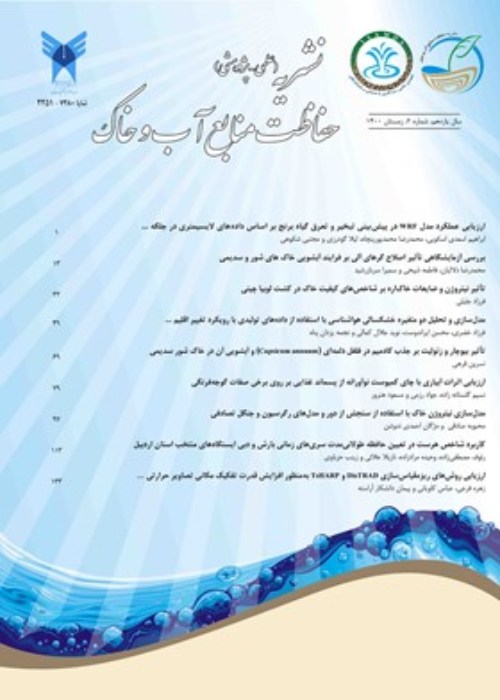Assessing the Performance of WRF Model in Prediction of Evapotranspiration in Paddy Fields
Evapotranspiration as one of the main components of the hydrological cycle, has a significant role in proper irrigation planning and water resources management. In this case, estimating evapotranspiration is limited due to a lack of data and a deficiency of meteorological stations. Therefore, today numerical models such as WRF are a powerful tool for generating and predicting meteorological quantities (wind speed, humidity, etc.) that are needed to estimate evapotranspiration. So far, no research has been conducted to investigate the effect of different schemes of the WRF model on the estimate of rice evapotranspiration. The purpose of this study is to evaluate the efficiency of the WRF model and obtain the result for estimating evaporation for rice plant in the central plain of Guilan.
Evapotranspiration rates vary from 2.7 to 8.5 mm per day. The average ET during three different periods of plant growth, including the initial, middle, and final periods, is estimated to be 4.63, 5.97, and 5.98 mm per day, respectively. The three configurations 1, 2, and 4 are mainly overestimated in predicting evapotranspiration of rice plants, and the computational values are estimated to be higher than the values measured by the lysimeter. The results show that the highest amount of RMSE occurred in configuration No. 4 at 8.47 and the lowest rate occurred in configuration No. 3 at 1.26. Summary of results shows that configuration No. 3 in all four criteria mentioned has performed better than other configurations to predict daily evapotranspiration of rice. The results showed that the non-local schema used in the model, simulates better than the local schemas for the daily evapotranspiration of the rice plant. Findings show that in the local YSU schema, the accuracy of predictions is significantly increased and is only 0.64 mm on average less than the estimated lysimetric data.
The results showed that using appropriate schemas in the surface layer and boundary layer of the WRF model, affects on accuracy of evapotranspiration predictions. The results of this study showed that, this model by using the YSU non-local boundary layer scheme can accurately predict the evapotranspiration rates of the rice plant for the next day and this is due to the higher ability of this schema in predicting the parameters affecting evapotranspiration (including temperature and wind). Therefore, the WRF model can be implemented by using GFS forecast data for the next few days and by applying the FAO-Penman-Monteith equations to the model outputs, the values of potential evapotranspiration for different regions of the country can be calculated. Since evapotranspiration is directly related to atmospheric thermodynamic processes, so using other different atmospheric physics schemas (not considered in this study) can produce different results.
- حق عضویت دریافتی صرف حمایت از نشریات عضو و نگهداری، تکمیل و توسعه مگیران میشود.
- پرداخت حق اشتراک و دانلود مقالات اجازه بازنشر آن در سایر رسانههای چاپی و دیجیتال را به کاربر نمیدهد.


